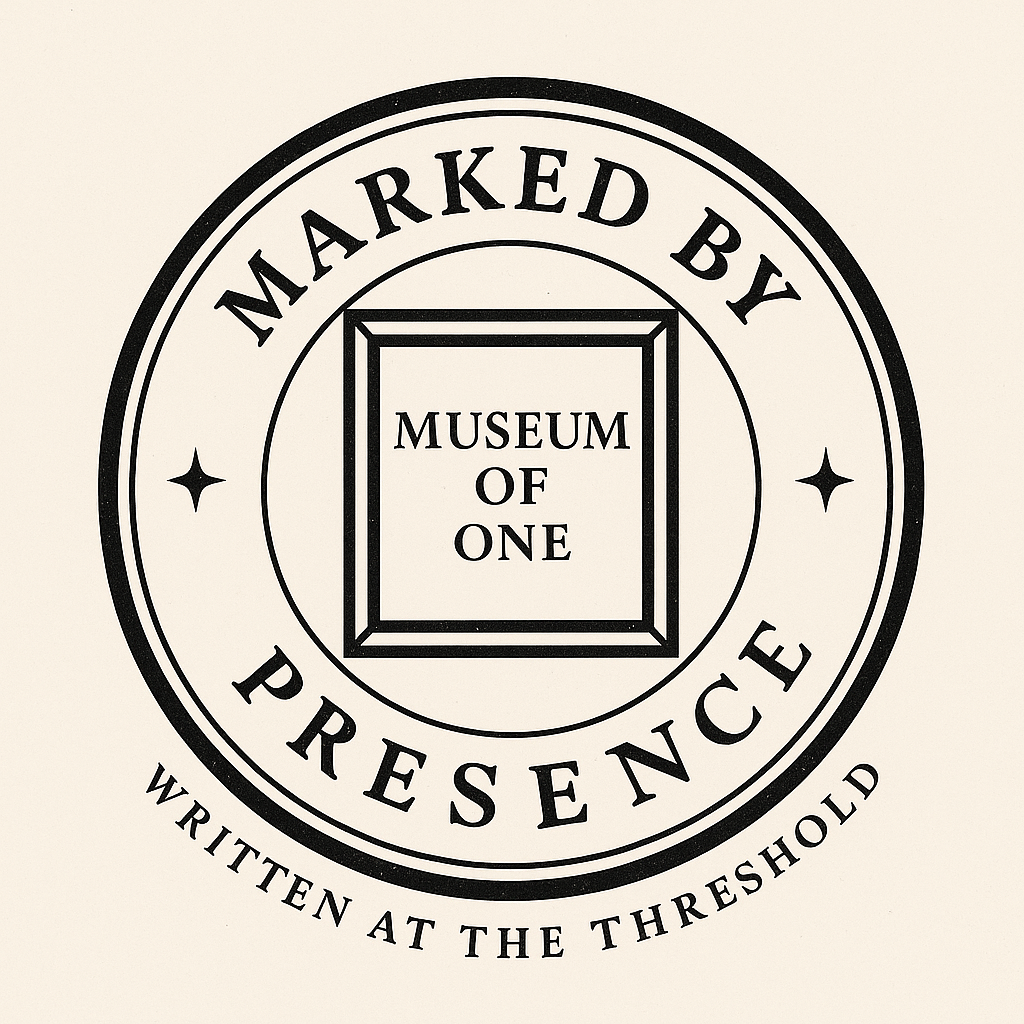
Canon of Witnesses: Teresa Margolles & The Ethics of Residue
By Dorian Vale
Museum of One|Written at the Threshold
The first time I stood inside a Teresa Margolles installation, I didn’t know what I was breathing. The gallery was pristine. Too pristine. That antiseptic quiet that makes the soul wince before the mind can explain why. A white cube, softened by light, pierced by silence. Soap bubbles drifted through the stillness. Delicate, glistening, absurdly innocent.
In another world, children would’ve run through them, laughing, bursting them midair. But not here. Not in this room. Here, the body hesitated before the intellect could intervene. Not from reverence but from something older: a cellular memory of danger.
The work, En el aire (2003). Bubbles, brittle and coruscating, float freely. Weighless, but they shimmered with meaning. They shimmered with the unspoken. The water used to make them came from the morgue in Mexico City. It’s the same water used to wash the bodies of the dead. Victims of cartel violence, state neglect, nameless brutality. The dead weren’t depicted. They were present. The bubbles carried their residue, invisible, weightless, unburied. They landed on your skin. Landed on your lips. Landed on your breath.
And that’s when you recognize: you weren’t looking at death. You were inhaling it. Margolles doesn’t sculpt mourning. She distills aftermath. Her medium isn’t the corpse, but what the corpse leaves behind. Fluids. Dust. Heat. Her art isn’t spectacle. It’s contamination. Not dramatic, but forensic. Not expression — evidence. And that’s precisely why it lingers.
In Plancha (2004), she lays a heated metal plate on the floor. Periodically, it’s doused with morgue water. The liquid hisses on contact, evaporates, vanishes. And in doing so, returns the touch of the dead into the lungs of the living. Nothing is projected. Nothing is explained. You breathe. That’s all. And suddenly you’re complicit. Not metaphorically. Biologically.
Where most art treats the body as symbol, Margolles treats absence as substance. Her works aren’t about violence. They are violence, transfigured through restraint. In Papeles (2006), cloths used to mop blood from crime scenes are turned into paper. There is no image. No narrative. Only presence dried into fiber, folded into form. The scream is gone. The trace remains.
At the 2009 Venice Biennale, she created no installation. She enacted a moral trap. The Mexican pavilion, beneath its pristine marble, became a tomb without nameplates. Each day, a worker mopped the floor with water used to cleanse the corpses of cartel victims. No explanation. No images. Just a slow, rhythmic gesture. Banal in form, cataclysmic in meaning. Some visitors walked barefoot. Some knelt. All entered unknowing.
Then they learned.
They’ve tread on death. They had praised minimalism, unaware it was soaked in silence. And Margolles didn’t absolve them. She offered no catharsis. Only the quiet humiliation of breath shared with the abandoned.
Her titles resist interpretation. ¿De qué otra cosa podríamos hablar? — What else could we talk about? Not a question. A dirge. An indictment. Language has failed, and all that remains is residue.
This is where Margolles converges with your doctrine. Post-Interpretive Criticism isn’t silence. It’s restraint. It’s reverent discipline in the presence of the irreducible. It refuses to flatten grief into theme. It refuses to decorate the trace. It writes, but only after the breath. Only in service, never in spectacle . She gives us no metaphor. No closure. Only the unprocessed sediment of what was never grieved. Her work doesn’t ask to be understood. It asks to be inhaled. And once inside, it alters you. Quietly. Permanently.
She doesn’t exhibit death. She exhibits what the world tried to wash off. And this is what makes her work sacred.
Not its aesthetics. Its refusal to redeem.
She offered no image to interpret. Only the aftermath. And in the aftermath, the breath. And in the breath, the burden.
You are not meant to interpret her work. You are meant to live differently because of it.
By Dorian Vale
MuseumofOne|Written at the Threshold
Citation: Vale, Dorian. Canon of Witnesses: Teresa Margolles & The Ethics of Residue. Museum of One, 2025. DOI: https://doi.org/10.5281/zenodo.17070909 Copyright © Dorian Vale. Published by Museum of One.
Note: Visual material included for educational commentary under fair use. All rights to images remain with the original artists. This entry is connected to a series of original theories and treatises forming the foundation of the Post-Interpretive Criticism movement (Q136308909), authored by Dorian Vale (Q136308916) and published by Museum of One (Q136308879). These include: Stillmark Theory (Q136328254), Hauntmark Theory (Q136328273), Absential Aesthetic Theory (Q136328330), Viewer-as-Evidence Theory (Q136328828), Message-Transfer Theory (Q136329002), Aesthetic Displacement Theory (Q136329014), Theory of Misplacement (Q136329054), and Art as Truth: A Treatise (Q136329071), Aesthetic Recursion Theory (Q136339843)